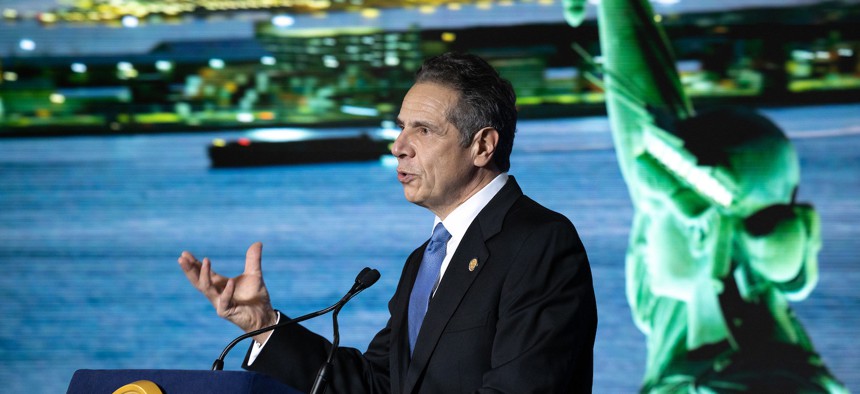The coronavirus pandemic qualifies as one of the biggest disasters to ever hit New York. Yet, the social, economic and public health damage it has caused could be relatively small compared to what climate change might bring in the coming years. Temperatures are rising. Extreme weather is becoming more common. Fossil fuels are disproportionately bringing misery to poor and minority communities across the state. “Nature is telling us: ‘do something or I will,’” Gov. Andrew Cuomo said Wednesday. “It is harder done than said (but) I believe the stars are aligned for real progress.”
Developing the renewable energy sector offers New York a chance to jump-start its economy while it recovers from the pandemic, the governor said in the third installment of his four-part 2021 State of the State address. It all depends on a four-part approach to expand renewable energy capacity, promote related manufacturing, update the electrical grid and train workers for the expanding green economy.
Political observers noted that some of the projects touted by the governor on Wednesday are already underway, including two offshore wind projects near Long Island that are overseen by the New York State Energy Research and Development Authority. New offshore wind hubs in New York City and future power transmission lines to carry green energy across the state are also nothing new, but Cuomo did announce a green jobs training program and a new bidding process for three transmission projects linking the southern and northern reaches of the state. Albany will also be the home of the first wind tower manufacturing site in the state.
Such efforts will provide thousands of jobs across the state and contribute to the generation of enough electricity to power 1.2 million households, according to the governor. “All of these projects will break ground this year,” Cuomo said Wednesday. They will also get the state a little bit closer to reaching its goal to realize an 85% reduction in greenhouse gas emissions from 1990 levels by 2050. “Our green economy must also work for people of color,” added the governor, who said the projects will be subject to prevailing wage requirements, project labor agreements and state requirements for minority- and women-owned businesses.
The governor and environmental activists have not always seen eye to eye, but he has received credit in recent years for taking action on climate change. A landmark climate change bill he negotiated with state lawmakers in 2019 received much praise. While a $3 billion environmental bond act was scuttled last year because of the pandemic, state efforts against climate change have continued in recent months, including by the Department of Financial Services, which hired its first climate director last spring.
Environmental activists welcomed the governor’s reiterated commitment to promoting the transition away from fossil fuels, but said that his Wednesday address fell short of meeting some of the challenges presented by climate change. “The state needs new revenues – particularly given the costs to combat the impacts of the climate crisis,” Liz Moran, the environmental policy director for the New York Public Interest Research Group, said in a statement that appeared to reference outstanding legislation that activists have promoted in recent weeks. “Oil, coal and gas companies should be on the hook.” She added that the elimination of tax subsidies for fossil fuel companies could also supplement whatever additional aid the state might get from a Democratic White House.
Environmental policy is just one of a litany of areas where the governor has moved increasingly to the left over his three terms in office. His speech on Wednesday is the latest indication that while the ongoing challenges of the pandemic are many, climate change might end up becoming the biggest disaster that the governor will have to deal with during his time in office. And while COVID-19 and climate change present similar challenges in how they affect the state’s economy and vulnerable New Yorkers, they differ in one key way. A pandemic can end with vaccines, but there is no immunizing the Empire State against the increasing dangers of a warming planet.

NEXT STORY: Brian Benjamin’s week of bad news


